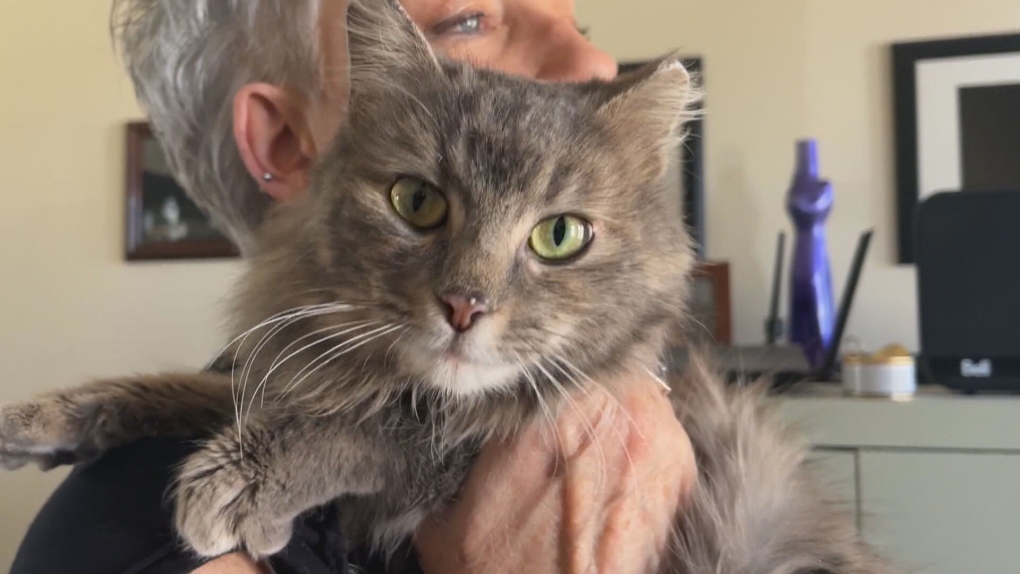
Amazing
Tiger Population in Nepal Doubles Through Special Initiatives
Doubling their tiger population, an initiative known as TX2, is a goal that Nepal hopes to achieve by 2022, which would make it the first country in the world to meet this target. They recorded a 94 percent increase in wild tigers found there between 2009 and 2018.
Bangladesh, on the other hand, has made little progress toward achieving the TX2 goal by 2022, even though Bengal tigers are an integral part of our national identity. Bengal tigers in Bangladesh have risen from 106 to 114 since the 2015 census, according to the 2018 tiger count.
Over the past few decades, Nepal has grown its Bengal tigers more than the Bengal region as a whole. According to the latest estimates, the Bengal region, which includes India’s West Bengal and Bangladesh’s Bangladesh, has 203 tigers in its forests at this time. Since the Tiger Summit in 2010, Nepal has made extraordinary efforts to increase the tiger community in its forests, even among the poorest nations. Various political and community-based initiatives have resulted in a dramatic upsurge in the tiger population.
To start with, Nepal figured out what was causing the tiger population to decrease. It had a significant impact on reducing the poaching of tigers and caught the conspirators of the worldwide tiger poaching circle. There were no tiger-poaching incidents in the country in 2014. Tigers and animals close to extinction got protection from uncrewed aerial vehicles (UAVs). More than 400 citizen-based anti-poaching units have been set up to monitor wildlife corridors and prevent poaching.
About habitat management, Nepal has made a name for itself. In doing so, it has made it possible for the tigers to roam the area at a manageable density, making it possible for them to avoid conflict with humans through increased funding.
Relocating villagers from protected forest areas was one way to reduce human-tiger conflict, but the country also worked with local communities to reduce their dependence on forest products. Peaceful coexistence between tigers and humans occurred thanks to the government’s efforts to empower local people to protect the nearby forests and leave 28 percent of its forests to local communities to manage.
As a result, the Nepalese government ensured that the habitats of important prey species were adequate. To maintain the connection between core tiger and prey natural environments, Nepal built numerous key strategic reservoirs, put in place solar innovation freshwater courses, and formed new restricted forests.
Poachers have killed more than a dozen tigers in Bangladesh over the last two decades. These issues are manageable using the Nepal model. If Bangladesh wishes to prevent the tiger-human dilemma in its remote regions, it should lead Nepal and set up practical anti-poaching divisions and advocacy.
Biologists identified Bengal tigers living in the Sundarbans as weighing approximately half of other untamed Bengal tigers in 2010. It suggests that the Sundarbans do not have enough prey for Bengal tigers to thrive. Additionally, the Nepal concept may be able to assist in this regard. With this model, Bangladesh can ensure that both tigers and their prey thrive in their habitats.
There are currently only 2.17 tigers per square mile in Bangladesh, far less than the country’s actual carrying capacity. As a result, Bangladesh can increase its tiger inhabitants without building a new tiger habitat.
It is Bangladesh’s goal to have a tiger density of 4.50 by 2027, according to the 2018-2027 Bangladesh Tiger Action Plan (BTAP). Even though Bangladesh is geographically distinct from Nepal and is currently dealing with climate change issues, it can achieve the BTAP’s goal by utilizing the Nepal model.
Maintaining a positive and well-balanced ecosystem with flourishing biodiversity is a sign of a healthy tiger population, not just a sign of tigers’ survival. As a result, Bangladesh’s government and other stakeholders should focus on increasing the country’s tiger population. We should take inspiration from the Nepalese model and implement the proven steps in our way as we work toward that goal.
Amazing
Missing Pregnant Cat Found at Ottawa Airport After 11 Days

A pregnant cat named Athena was found at the Ottawa International Airport, almost two weeks after she disappeared in the parking area. She had traveled from Winnipeg to Ottawa. The team from Furry Tales Cat Rescue discovered her around midnight on a Tuesday, and thankfully, she’s in good shape.
Volunteer Marta Burczycka from Furry Tales Cat Rescue expressed immense joy and gratitude for Athena’s safe return, highlighting her strong maternal instincts to protect her unborn kittens. The rescue operation caught attention after a helpful tip from Blake Fawcett, an employee working near the airport, who notified the rescue team.
Athena was initially sent to Ottawa on March 21 to get better veterinary care and a safe place to have her kittens. Unfortunately, she escaped when her carrier opened accidentally. For 11 days, volunteers and the rescue team worked tirelessly, setting traps and distributing flyers across the airport to find her before she gave birth.
The community effort was huge, with many airport employees and volunteers spreading the word and looking out for Athena. Janice Richard, one of the trappers, mentioned how they found Athena hungry but still pregnant, emphasizing the collective relief and happiness at her safe recovery.
The rescue story ended happily with Athena being taken care of and preparing to have her kittens in a safe and loving environment, thanks to the persistent efforts of the rescue team and the community’s support.
Amazing
America’s Youngest Teacher Started Her Career at 16

Shania Muhammad became a teacher at just 16 years old, after graduating from college at 15. She grew up in a home where learning was very important. She told “Good Morning America” about how her older brothers and sisters were big influences on her. They did well in school, which inspired her to do the same.
In seventh grade, her father noticed her advanced skills and started preparing her for college entrance exams. This led to her enrolling in college early and feeling like a superhero because she was so young. By 15, she was already finished with college and soon got a job offer to teach.
Muhammad waited until she was 16, so she could drive herself to work, and then started teaching 8-year-old students. These students see her as an adult and respect her, she says. In her classroom, she loves to keep the kids active with group work, presentations, and debates, creating a dynamic and engaging environment.
She encourages open communication in her class, telling her students they can talk about anything with her. Muhammad believes it’s important to have more confidence in success than in failure.
In her conversation with “Good Morning America,” Muhammad shared her view on facing the unknown with courage rather than fear. She encourages people to not hesitate and to create opportunities for themselves if they don’t already exist.
Amazing
Millions Tune In To See Conservation Group Save Seals

Ocean Conservation Namibia (OCN) is a group with a big heart and an important mission. Based in Namibia, a country with long, beautiful coastlines, OCN is dedicated to saving seals, especially the cute baby ones, from dangerous plastic and fishing lines.
Imagine you’re at the beach, and you see a group of seals playing and lounging around. Suddenly, you notice something’s wrong. One of the seals is stuck, tangled up in a mess of plastic or fishing line. It’s struggling and can’t get free. That’s where OCN comes in.
The team at OCN, led by Katja and Naude Dreyer, a married couple passionate about the ocean and its creatures, runs across the beach, right into the groups of seals. They’re on a mission to find any seal that’s trapped in harmful debris. Once they spot a tangled seal, they quickly and carefully cut off the entangling mess and set the seal free.
Since 2020, OCN has rescued about 3,000 seals! That’s a lot of happy, healthy seals swimming back in the ocean because of their efforts. Their rescue missions became super popular online during the pandemic. People all over the world watched their videos, feeling a bit better seeing the seals being saved during tough times.
OCN’s work is unique and impactful. Jeff Harris, a research ecologist, mentioned that the number of seals OCN saves is much higher than in other parts of the world. While he managed to free 100 sea lions in his best year, OCN often saves that many seals in just a month!
The Dreyers started OCN about twelve years ago. Initially, Naude would try to free the seals using a paddle or by grabbing them, but it was tough. Things got better when they received a special seal rescue net, making their missions easier and safer.
During the pandemic, when their kayaking business paused, they focused even more on rescuing seals. They also shared their work online, touching people’s hearts worldwide. Their video titled “Baby seal thanks his rescuers” got over a million views!
OCN not only raises awareness about the seals but also shows us the bigger problem – our oceans are filled with trash. They’ve shown that every little bit helps and that we can all do something to protect our marine life.
With donations from kind-hearted people, OCN has grown, now having a team of seven dedicated members. They’re doing more than just rescuing seals; they’re inspiring others to care about our oceans and the creatures that call them home. The Dreyers themselves have even changed their lifestyle, choosing not to eat fish and other animal products, to live in a way that respects the animals they work so hard to save.
So, Ocean Conservation Namibia is not just about saving seals; it’s about changing the way we see and treat our oceans, one rescue at a time.
Amazing
Hero Bus Driver Saves Students from Fiery Danger in New Orleans

In a heart-stopping incident in New Orleans, a school bus driver named Kia Rousseve became a local hero when she saved nine students from a burning bus. Her quick actions turned a potentially tragic situation into a story of courage and quick thinking.
It was a regular Wednesday morning, and Rousseve was on her usual route, about to make her fifth stop, when she noticed something alarming: smoke was coming from the bus. Without a moment’s hesitation, she knew she had to act fast. “As soon as I seen the bus smoking, my instinct was get them off of the bus,” Rousseve recounted.
A little girl on the bus ran up to her and confirmed her fears, saying the bus was on fire underneath. Rousseve didn’t waste a second. She stopped the bus and made sure all the students got off safely. “I turned the bus off and got off. When I got off, the bus blew up,” she said, describing the terrifying sounds of the explosions.
Rousseve’s primary thought during the ordeal was her child, which fueled her determination to ensure the safety of all the students on board. Her employer, Community Academies of New Orleans, praised her actions as “Courage on wheels.” Having driven school buses for three years, Rousseve demonstrated experience and bravery that day.
Feeling grateful and proud, Rousseve believes a faulty alternator was the cause of the fire. She’s relieved and happy that she could save the lives of the children, as well as her own. “I feel great about saving other kids’ lives and saving my life,” she expressed, adding that she felt divine protection was at play during the emergency.
Amazing
Mackenzie Scott’s Big Give: $640 Million to Nonprofits

Mackenzie Scott has made headlines again with her generous donations to nonprofit organizations. Initially, Scott promised to give $1 million each to 250 nonprofits, but she surprised everyone by more than doubling her donation! Now, she’s giving a whopping $640 million to 361 organizations.
So, who is Mackenzie Scott? She’s a billionaire philanthropist who likes to help out by giving her money to groups that do good things for communities. This time, her organization, Yield Giving, decided to help even more than planned because of the great work these nonprofits are doing.
Scott worked with an organization called Lever for Change to find these nonprofits. They had a big, open call where nonprofits could apply for the money, and the response was amazing. Lever for Change said they were so impressed by the work these groups are doing that they wanted to give money to more of them.
Here’s how it broke down: 279 top-rated nonprofits got $2 million each, while another 82 organizations received $1 million each. These groups do all sorts of important work, like helping people get back on their feet after being in jail, or creating theater programs with young people in Los Angeles.
What’s really cool is how they decided who got the money. It wasn’t just a few people making all the decisions. Instead, the nonprofits got to score each other, and then a panel of experts made the final picks. This way, lots of different voices helped choose the winners.
Scott and her team believe it’s important to shine a light on these organizations that are making big changes but might not always get noticed. They want to make sure these groups have what they need to keep doing their great work.
Mackenzie Scott said sharing information about these donations is important because it helps others see the good that comes from giving. She hopes that by talking about it, more people will be inspired to help out in their own ways.
-

 OMG6 years ago
OMG6 years agoA Couple Gave Birth to the Most Beautiful Twins Ever
-

 OMG6 years ago
OMG6 years ago20 Rare Historical Photos
-

 OMG6 years ago
OMG6 years agoHilarious Airport Photos
-

 Cute5 years ago
Cute5 years agoMom Refuses to Let Daughter Eat Sugar and Years Later This is What She Grows Into
-

 OMG5 years ago
OMG5 years agoTop Secret Air Force One Facts That You Never Knew
-
OMG5 years ago
The Funniest Yearbook Photos Of All Time
-

 OMG6 years ago
OMG6 years agoRetired Mathematician Restores Log Cabin
-

 OMG4 years ago
OMG4 years agoWhat Happened When This ‘Duck Dynasty’ Legend Chopped Off His Beard?